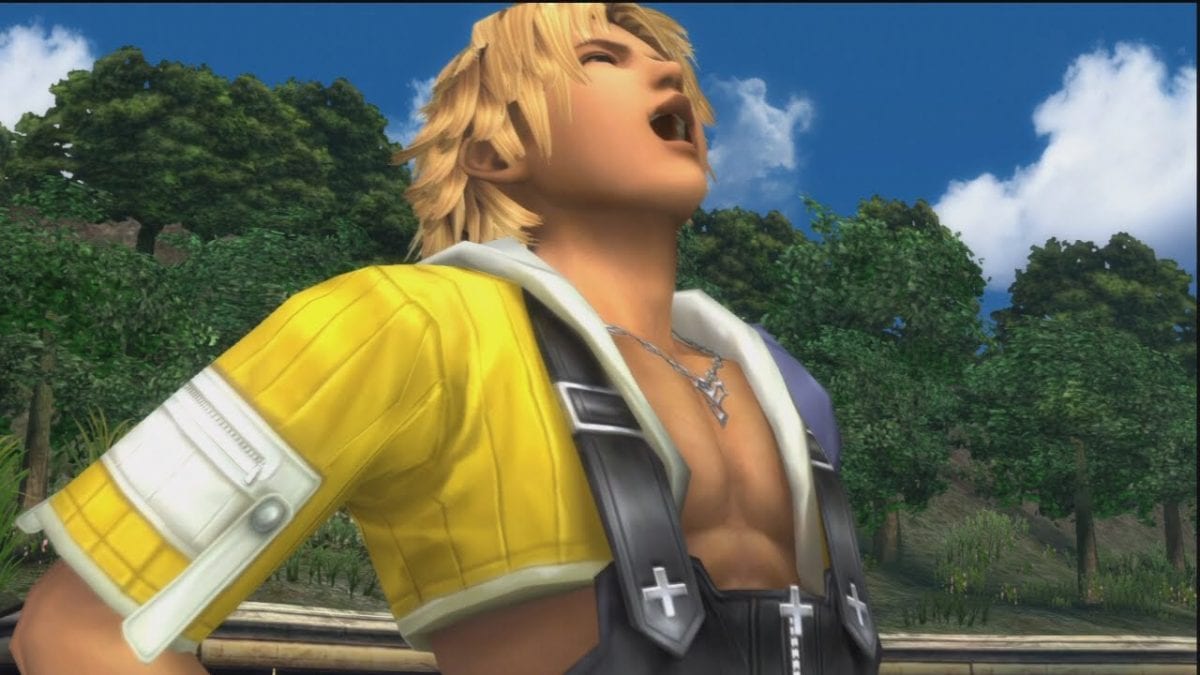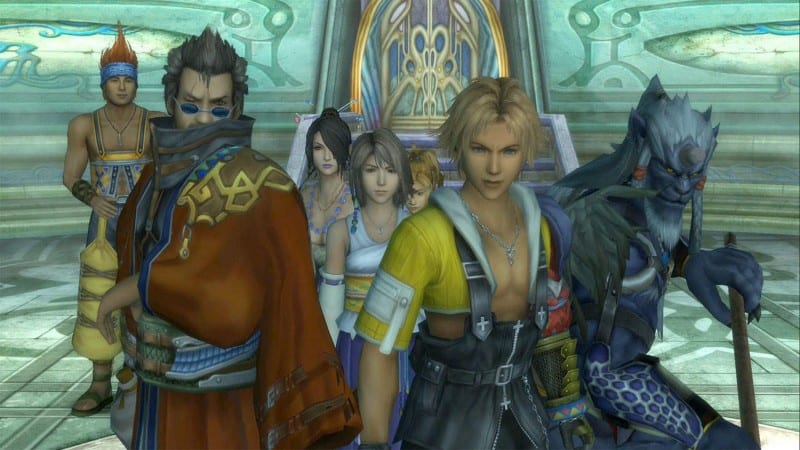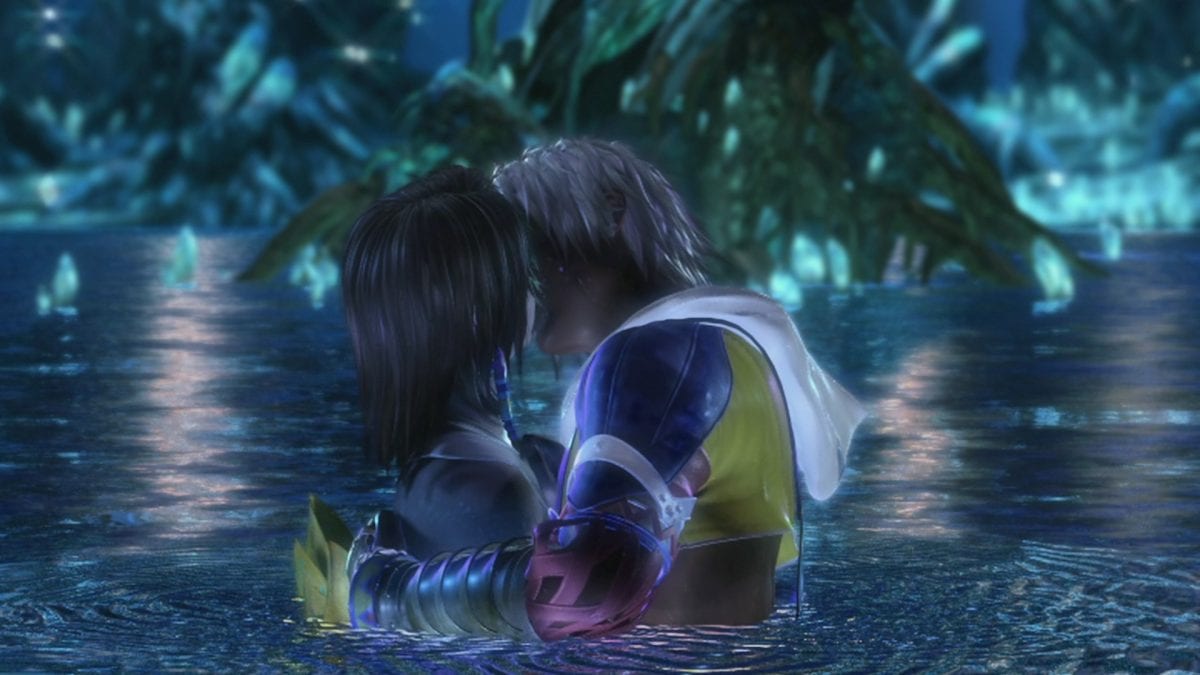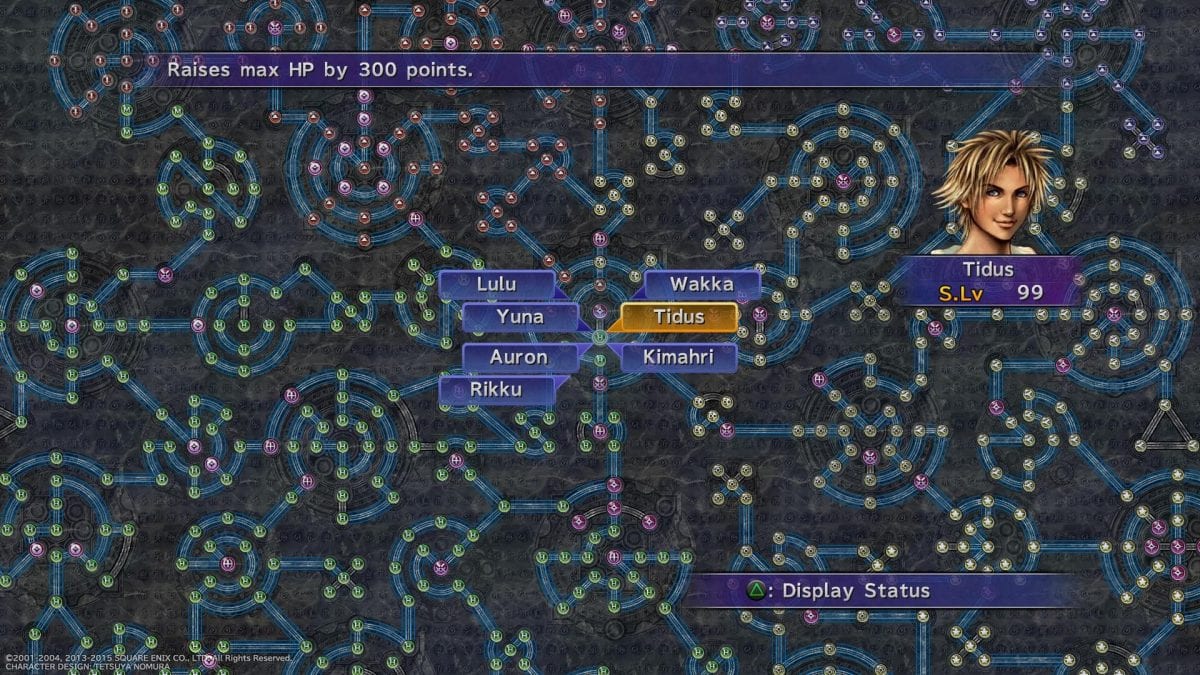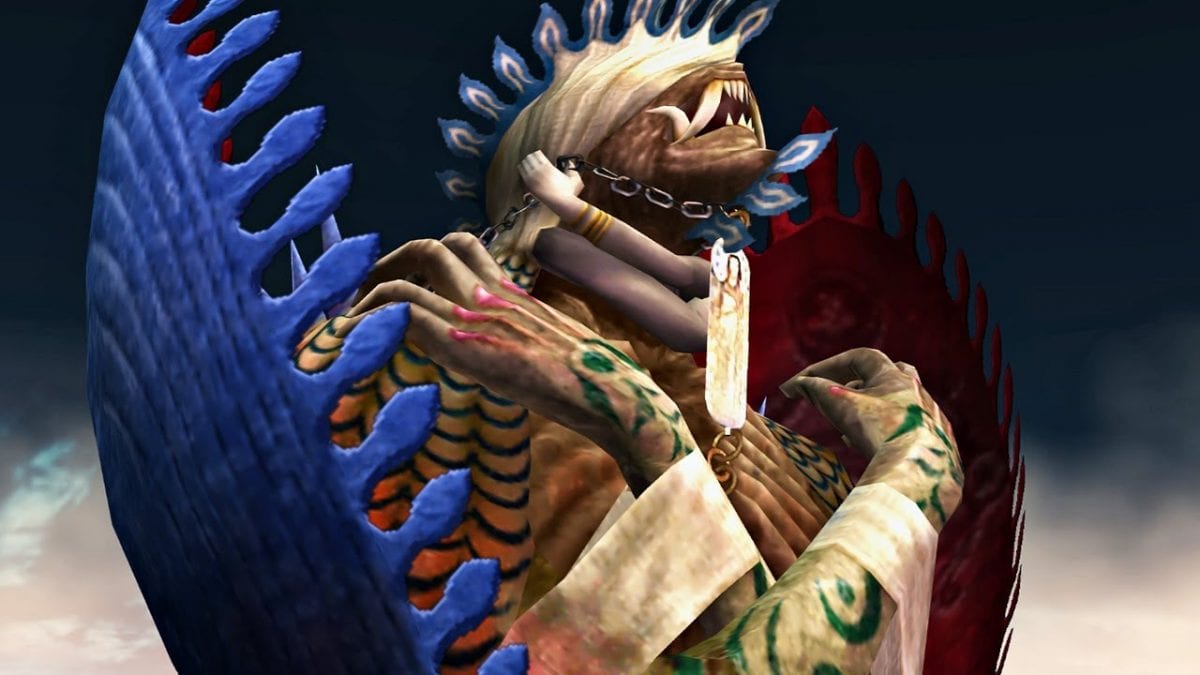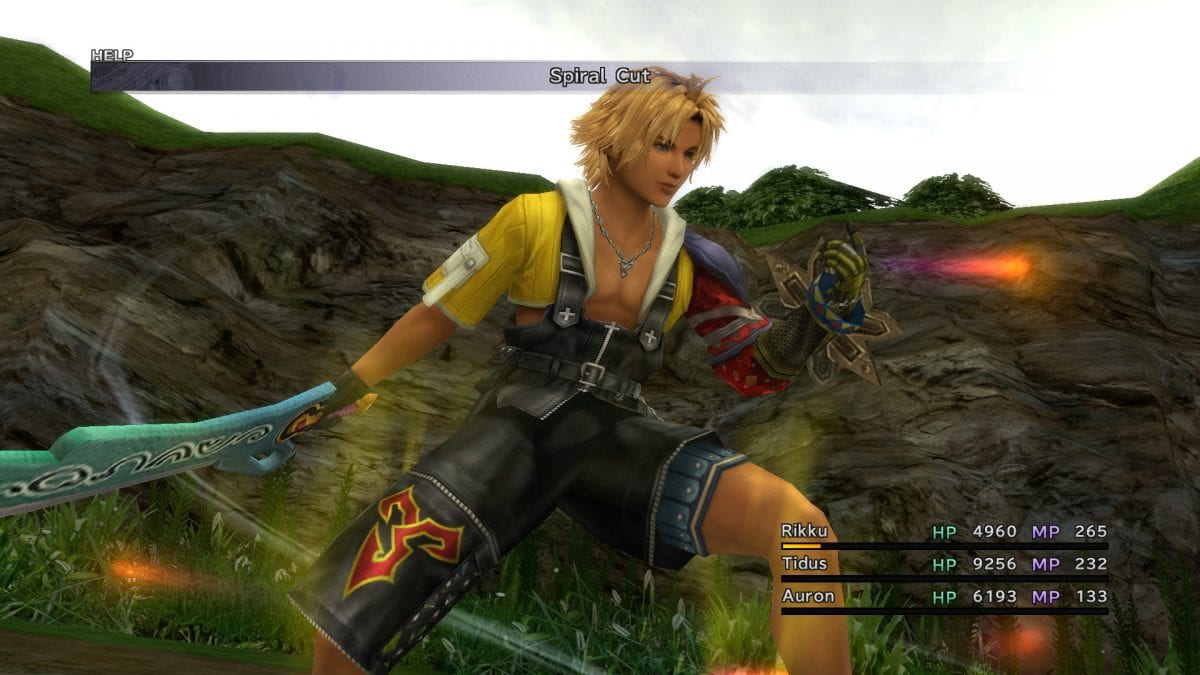Final Fantasy X marked both the end of an era for the franchise, while paving the way for what was to come. 20 years later, it’s still great.
Two years ago, I was driving down the Spanish countryside with two of my best friends. We were headed from Madrid to Pamplona to take part in the annual Running With the Bulls festival. Jet-lagged and exhausted from the night before, we made the four hour-long trek in silence, passing golden hills of wheat, small villages, and vineyards.
To pass the time, we’d occasionally come up with “Would you rather…” questions and random games to stay awake. As I drove through the fourth vineyard, a question popped into my mind, “If you could live in any video game world, what would it be?”.
Tyler said Destiny for the sheer ability to be an all-powerful Titan. My other friend Jason struggled with the question, but ultimately chose Grand Theft Auto V. When it came down to answering my own question, the answer was easy: Final Fantasy X. For the next half an hour, we reminisced on the expansive and brilliant land of Spira: citing Blitzball, scenic views, and mighty Aeons as major pros, with Sin and Seymour being significant cons.
It’s amazing how, almost twenty years after the game’s release, three 30-something year olds were still talking about specific details for one of the best Final Fantasy games around. Final Fantasy X left an indelible mark on the franchise and the video game world with its captivating story, visuals, and gameplay mechanics that were never replicated again.
Today, as Final Fantasy X celebrates its 20th anniversary, I wanted to look back on what made this game so special and why it’s considered one of the best in the series.
Engaging Characters
While Cloud, Tifa, Sephiroth, Aerith, and Barret are the poster characters for the Final Fantasy series, the franchise is rich with incredible and memorable characters. I would argue that Final Fantasy X’s heroes manage to stand among the best of them as well.
The game stars Tidus (the lovable goof and Zanarkand Blitzball player with daddy issues), Yuna (The Summoner destined to defeat Sin at the cost of her own life), Auron (badass ex-warrior monk), Kimahri Ronso (Yuna’s Guardian), Wakka (Blitzball player and life of the party), Lulu (One of the most badass Black Mages in Final Fantasy history), and Rikku (The scrappy thief and Al Bhed).
All of these characters unite in a common goal to protect Yuna on her pilgrimage to defeat Sin. And what a pilgrimage it is! The journey takes the troupe all the way from Baaj Temple, to Luca (my favorite location), the Thunder Plains to Mt. Gagazet, and to the Zanarkand ruins. Each location was completely unique, fascinating to explore, and incredibly important to the overall lore of Final Fantasy X.
Throughout this journey, we witness incredible development of each character, as we experience all of their highs and their lows. Who could forget the Macalania Spring scene? When Tidus and Yuna essentially express their love for each other at their most vulnerable…To this day the song playing over this sequence gets stuck in my head.
Fun Gameplay
Today’s Final Fantasy games are all about speed, attacking fast, and making decisions on the fly. It wasn’t always like that in the long-standing Final Fantasy universe, however. In fact, Final Fantasy X was the last time a mainline Final Fantasy game featured the franchise’s traditional turn-based style of combat. It’s also, arguably, the best game to ever use the turn-based mechanic.
Unlike the games that came before, Final Fantasy X didn’t employ a timer for turn-based maneuvers. When it was your turn you could take as long as you wanted and never be rushed. It was nice and convenient, making for some more strategic planning, but what truly made Final Fantasy X stand-out was the ability to switch out characters within battle. This was such an innovative gameplay mechanic, as it made every character useful while eliminating the stress of having to pick which characters to go into battle with.
Another amazing gameplay aspect was the Sphere Grid, Final Fantasy X’s unique character progression system. With it, players were able to progress characters through other characters’ Sphere Grids. It allowed you to really play around with the strengths and weaknesses of your various characters, giving them a chance to take their skills beyond what you’d think possible. For example, mages with weak attack power like Yuna could progress through Auron’s Sphere Grid and become an absolute tank. It was wild!
Taking characters through other Sphere Grids became a handy strategy to toppling the game’s most frustratingly difficult bosses (like the third time you fight Seymour). When we were twelve years-old, my buddy Austin and I spent months trying to defeat Seymour. We grinded our butts off, earning points in our Sphere Grids, to finally take him down. To this day, the victory over Seymour is still one of my all-time favorite video game moments.
That’s a testament to how truly great and challenging boss battles were in Final Fantasy X. Furthermore, it shows just how truly gratifying the game could be. By no means is it to the level of the Soulsborne games, but for two twelve year-olds in the pre-internet era, it was an experience of a lifetime.
Epic Summons
Until Final Fantasy VII Remake, I don’t think any Final Fantasy game has handled summons as well as FFX did. In previous games in the franchise, Summons were great for massive all-out attacks, but were overall fleeting figures. In Final Fantasy X, players would clear out and allow for summons (or what they referred to as Aeons) to take turns for them. So instead of being one off encounters, these Aeons became full-on playable characters in battle complete with their own health bar, turn limit, and ability set.
There were a total of 8 Aeons in Final Fantasy X. Five you get playing through the normal course of the game, with three of them you have to intentionally seek out. Valefor, Ifrit, Shiva, Ixion, Bahamut, Anima (my favorite), Yojimbo, and The Magus Sisters. These Aeons were so unique and so fun to play with, I always made up excuses just to summon them and then I’d toy with enemies just to prolong their use.
In many ways, Final Fantasy X marked the end of an era for the franchise. It was the last main line game to be truly turn-based while featuring the final appearance of certain Summons characters. It was the last one to let you tag out characters during battles, delivered on an innovative progression system, and it was the only time we’d ever get a completely original sport with Blitzball.
So, cheers to the 20th Anniversary of Final Fantasy X. You truly were one of a kind. Here’s hoping Final Fantasy X-3 will see the light of day some day and we’ll be able to revisit all of the things that made Final Fantasy X so special again.

